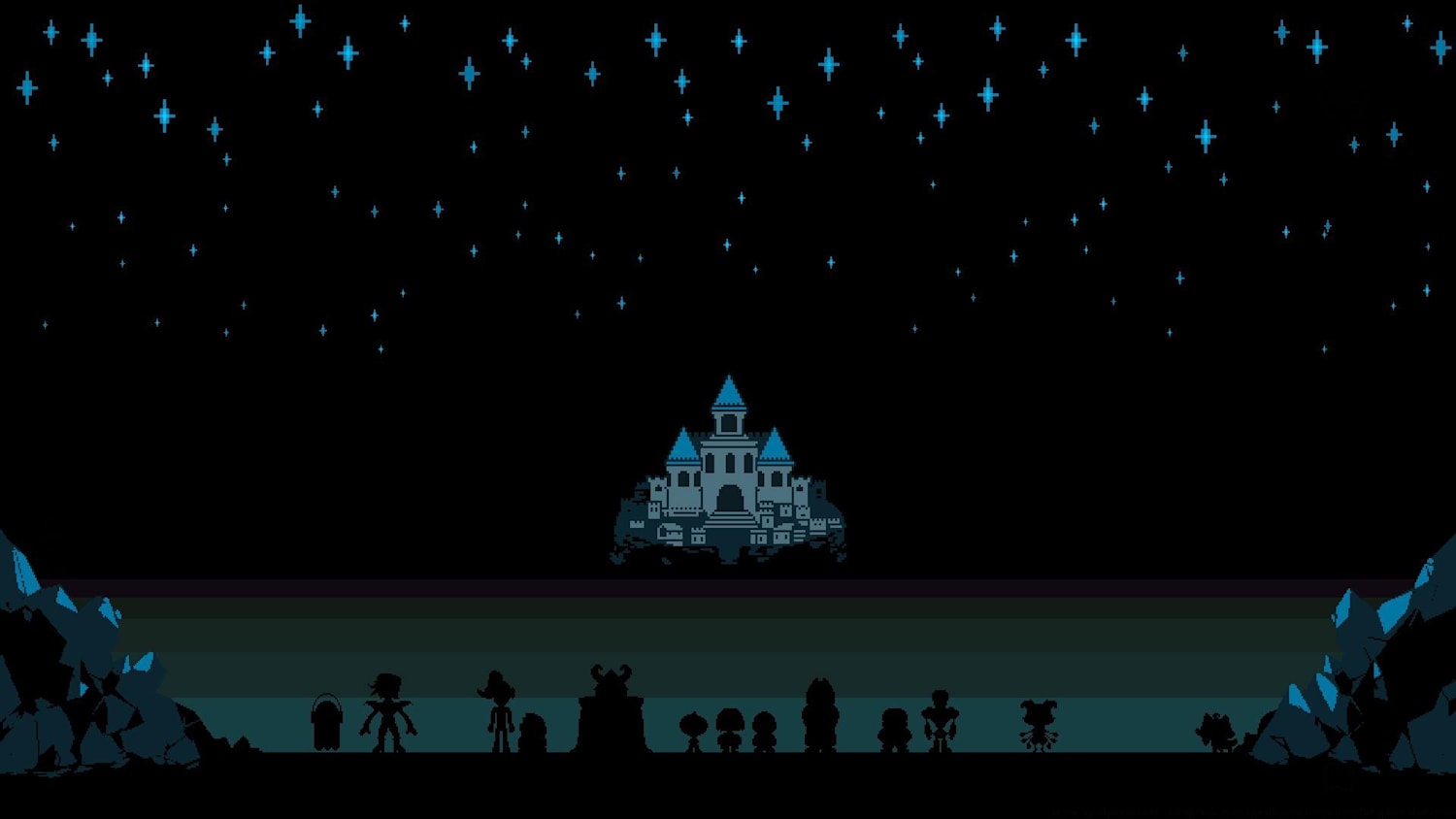Undertale is a game so iconic that it feels impossible not to know about it. It is also, my favorite game. It’s a turn-based RPG that stands out with its unique mechanics, lovable characters, a masterful soundtrack, and deep lore. The game offers three main paths: Neutral, Pacifist, and Genocide. You can take these paths in any order, but the commonly recommended playthrough order is Neutral, followed by Pacifist, and finally, Genocide. And that’s exactly how I played it earlier this month.
While all three routes offer something unique, it was the Genocide route that really stood out to me, despite its flaws. To be clear, I know this opinion will likely upset two groups of people: those who love the game and don’t want to hear any negativity, and those who disapprove of Genocide being my favorite path. I understand how confusing my stance might sound, but let me explain why the Genocide route, despite its flaws, remains my favorite way to play Undertale.
A Weirdly Perfect Experience
The Genocide Route: A Love-Hate Relationship
Imagine a book titled “What Not to Put in Your Video Game.” Now, picture the creator of the game, Toby Fox, deliberately adding every single gameplay mechanic listed in that book. Yet, despite this, the result is a masterpiece. That’s the best way I can describe the Genocide route.
![]()
The core gameplay mechanics are bizarre and unorthodox, but the overall experience is unforgettable. It’s one of the weirdest video game experiences I’ve ever had. Genocide is full of questionable design choices, but in the best possible way. I’ll get into why that is in this article.
Enemy Grinding: The Heart of Genocide
What is Enemy Grinding?
In the Genocide route, one of the defining features is enemy grinding. This mechanic is simple yet time-consuming: you need to kill all monsters in an area until a pop-up appears saying, “But nobody came.” This tells you that you’ve wiped out the entire population of that area, and it’s necessary to move on.

This process can take up to 15 minutes of walking in circles, continuously fighting enemies. It sounds tedious, right? And it is. But here’s where it gets interesting.
Why this Grind is Genius
The endless killing may seem like a terrible design decision at first, but it actually serves a purpose. It’s a feature that discourages players from completing this route, making you feel like you’re not supposed to be doing it. Yet, the curiosity to see what happens next pushes you forward.
It’s like when an artist accidentally messes up their painting, but in the process, it becomes even better. The more enemies you kill, the more you feel the weight of your actions, and that makes the grind oddly compelling. It’s a fascinating design choice that grows on you, despite its repetitiveness.
At first, I really disliked the grinding mechanic because it felt boring. But looking at it from an artistic perspective, it’s one of the most unique features of the game. The grind might be tedious, but it keeps you engaged in the route. And honestly, it’s a lot more interesting than shiny hunting in Pokémon.
Boss Fights - A Rollercoaster of Difficulty
The Genocide Bosses
In Genocide, every single boss fight is a one-shot kill, except for two: Undyne the Undying and Sans. These two are exclusive to this route and are, without a doubt, the highlight of the gameplay.

I absolutely loved these two bosses. They were challenging, requiring over two hours to defeat. But while they were incredibly tough, Undyne the Undying and Sans are also the only bosses that provide any real difficulty in Genocide. This leads to a major issue with the Genocide route: the difficulty curve.
The Difficulty Curve - It’s a Feature, not a bug
A difficulty curve refers to how a game gradually increases its difficulty. In Genocide, the curve is all over the place. The majority of the route is easy, and then suddenly, you hit two bosses that are extremely hard. This sharp contrast creates a feeling of unfair difficulty that might ruin the experience in other games, but in Undertale, it’s oddly fun and adds to the chaotic nature of Genocide.
These two bosses are the only real challenge, and they make the route entertaining. Despite the difficulty curve being one of the worst in video game history, it ends up being a fun and memorable experience because of how bizarre and unpredictable it is.
Music: The Part that WILL Make You fall in love with the Game
The Soundtrack
Undertale’s soundtrack is iconic, with great music across all paths. Half of YouTube uses the music in the videos. But for me, the Genocide route stands out as having the most unique and powerful music in the game. Many of the tracks are disturbing, which only adds to the atmosphere of the route.

The overworld music gets remixed in Genocide, slowing down and becoming eerie, creating a creepy and unsettling vibe that makes the experience so immersive. Without this shift in music, Genocide wouldn’t have been nearly as impactful.
The Iconic Tracks: “Battle Against a True Hero” and “Megalovania”
Two tracks, in particular, stand out: “Battle Against a True Hero” and “Megalovania.” These are, in my opinion, the best tracks in the entire game, and possibly in all of video games. “Megalovania” has become popular, mostly because of memes, but it’s genuinely a masterpiece. It’s one of the best pieces of video game music I’ve ever heard, and it plays during one of the most intense moments in the game.
“Battle Against a True Hero” is equally as incredible. These two tracks, along with the unforgettable moments they accompany, are what make the Genocide route my favorite. They create a musical experience that’s just as unforgettable as the gameplay itself.
Conclusion: Why Genocide is My Favorite Route
So why, despite all the flaws, does Genocide remain my favorite route in Undertale? It’s because, in a strange way, it feels like the real Undertale. It’s the path that the game wasn’t really designed for, but it’s the one that I discovered out of my own curiosity. Despite its terrible game design, Genocide became an experience that was unforgettable and truly unique.
Yes, there’s endless enemy grinding, a terrible difficulty curve, and an unsettling soundtrack. But all of these elements work together to create something that feels raw and real. It’s an imperfect experience, but it’s exactly what makes Genocide stand out in a way that Neutral and Pacifist don’t.
If there’s one thing to take away from this article, it’s that video games can be weird, and sometimes the weirdest experiences are the best ones. Undertale is definitely the weirdest game I’ve ever played, but it’s also one of the best.
Finally, if you’re someone who gets upset about others choosing the Genocide route, take a step back. Understand that the beauty of a game like Undertale is in the choices we make, and everyone should be free to play it the way they want.
Thanks for reading, and I’ll see you in the next one!

